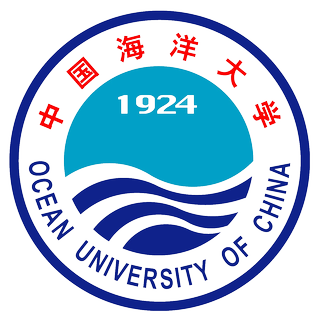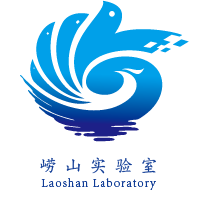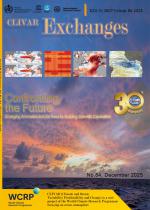UN Ocean Decade Conference Session on Co-Designing Ocean Observing for the Tropics
Submitted by Yang Zhao on Fri, 2024-12-20 00:39


 Scott Glenn and Cheyenne Stienbarger (Tropical Cyclone Exemplar co-chairs) presenting on a proposed regional pilot at the Korea Institute of Ocean Science and Technology (KIOST).
Scott Glenn and Cheyenne Stienbarger (Tropical Cyclone Exemplar co-chairs) presenting on a proposed regional pilot at the Korea Institute of Ocean Science and Technology (KIOST).




By Juliet Hermes, Ann-Christine Zinkann, Weidong Yu, Yosuke Fujii, Scott Glenn, Cheyenne Stienbarger, Emma Heslop, Gregory Foltz, David Legler, Belén Martín Míguez, Tammy Morris, Ronnie Noonan-Birch, Elisabeth Remy, Sabrina Speich, Anya Waite, Hindumathi Palanisamy
Building a transformative and solutions-oriented ocean observing system is critical to the success of the UN Decade of Ocean Sciences for Sustainable Development. The design of such systems should follow the principles of co-design, working with stakeholders across the value chain and integrating their needs into the process. In addition, impact assessments by users such as ocean and climate prediction centers are essential for keeping the ocean observing system effective and efficient. During our satellite event held at the UN Ocean Decade Conference in Barcelona, Spain on 11th of April 2024, we discussed these principles and the observational needs of a suite of “exemplars” or user areas with a focus on the tropics. These included boundary currents, tropical cyclones, marine heatwaves and marine carbon. The event began with a short presentation and was followed by a “speed-dating” session where attendees met with leaders of the GOOS Co-Design exemplars, the coordinating group of the tropical Pacific observing system, and the impact assessing activities from the ocean and climate prediction perspective, to discuss regional involvement and collaborations, and made new connections while raising awareness for the program's activities.
Ocean Observing Co-Design Program
The Ocean Observing Co-Design Program aims to evolve the ocean observing system to be co-designed with observing, modeling, and key user stakeholders, making it truly responsive and agile to user needs, and integrated along the value chain. This is accomplished through exemplar areas.
Marine Carbon Exemplar
The carbon exemplar will facilitate a co-design process that produces an expert design for ocean carbon observation in collaboration with end-users. Nations can use this to integrate marine carbon data into climate policies and solutions. During the session, the team engaged with carbon chemists and physical oceanographers to identify the most important measurements for establishing a baseline for ocean carbon. Discussions included a pilot project in the Mediterranean Sea and the impacts of freshwater inputs on acidification. The team also prioritized use cases and explored how regional insights could be scaled globally. This led to discussions on marine carbon dioxide removal (mCDR) and the creation of best practices for carbon data collection, enabling proper monitoring, reporting, and verification.

Anya Waite (Carbon Exemplar co-chair) and Ronnie Noonan-Birch from the Ocean Frontier Institute presenting on the Carbon Exemplar Poster.
Tropical Cyclones Exemplar
Tropical cyclones are among the most significant weather and climate disasters worldwide, causing significant deaths, property damage and economic stress. There is a growing need for
improved forecasts to save lives and property, and to improve equity and resiliency. The exemplar aims to co-design ocean observing systems for improving tropical cyclone forecasts and warnings regionally and globally. This is to be achieved by increasing the coverage and delivery of ocean data to forecasting centers and scientists, and increasing connectivity of stakeholders along the value chain. Under the Tropical Cyclone exemplar, five regional pilots have been identified, i.e. the Tropical Americas and Caribbean, North Pacific Ocean and Marginal Seas, Southwest Indian Ocean, the Bay of Bengal, and the Pacific Islands.
Inspired by the recent collaborative, targeted hurricane observations in the Caribbean Sea, the participants discussed the potential collaborative actions across the three tropical basins. The initial interests on the comparative study over the Northwestern Pacific, where the monsoon regime dominates, and the Tropical Atlantic Ocean, where the trade wind prevails, were identified, following up the pan-tropics observing system initiative. This could be further expanded to the tropical Indian Ocean, where the intensive monsoon climate resides. The efforts are expected to improve our understanding on the different life cycles of tropical cyclones over the different climate regimes and their distinctive response to the changing climate.
 Scott Glenn and Cheyenne Stienbarger (Tropical Cyclone Exemplar co-chairs) presenting on a proposed regional pilot at the Korea Institute of Ocean Science and Technology (KIOST).
Scott Glenn and Cheyenne Stienbarger (Tropical Cyclone Exemplar co-chairs) presenting on a proposed regional pilot at the Korea Institute of Ocean Science and Technology (KIOST).Boundary Currents Exemplar
Boundary currents play a crucial role in regional weather systems, marine heatwave and tropical cyclones intensification, and local fisheries and aquaculture. The exemplar focuses on developing an observing system responsive to societal and scientific requirements, fostering innovative science-based solutions. The Boundary Current exemplar has chosen the Agulhas Current as its pilot region given this western boundary current is not well understood, yet is critically important to the global climate system as it connects the Indian Ocean to the Atlantic Ocean. As such, the team is organizing a workshop to understand priority gaps, develop observational requirements and a draft design of a backbone ocean observing system to better understand key features in the Agulhas Current region that influence critical areas e.g., Tropical Cyclones, Marine Life, and Marine Heatwaves.
Conversations held during the speed-dating session of the Pan-tropical workshop brought together lessons learnt from other western boundary current systems and in particular, the ocean observing infrastructure that are of value to the understanding of these powerful boundary current systems. One incredibly valuable tool discussed was that of observing system experiments (OSE) and observing system simulation experiments (OSSE) studies, which allows the analysis of an observing system using synthesized observations within a free-run model, or the exclusion of certain data sets, to understand where, in both space and time, observations are most critical to improve model predictions and forecast systems.
Marine Heatwaves Exemplar
Since the beginning of the 21st century, the particularly rapid warming trend in various oceanic regions has been associated with a strong increase in marine heat waves (MHWs). MHWs, defined as prolonged periods of anomalously warm ocean temperatures, have received increasing attention in the last two decades because of their impacts on marine species, habitats (such as seagrass beds, kelp forests, and coral reefs), regional weather regimes, and human societies. The increased frequency, duration and intensity of MHWs is one of the most prominent manifestations of global warming in the oceans. These events can occur not only at the sea surface, but also deeper in the water, posing further ecological risks.
The exemplar aims to develop an observing system capable of responding to different societal and scientific needs related to MHWs that will foster the emergence of innovative science-based solutions. During this session, we were able to discuss how to build the exemplar approach. Indeed, existing research suggests that MHW monitoring should be species-specific rather than geographically based, addressing the specific impacts on different species and ecosystems. However, this approach is complex and challenging given the diverse needs of end-users such as marine ecosystem managers, fisheries and aquaculture, and weather and climate services. To address this, the proposed approach involves co-designing integrated strategies with stakeholders that bridge the gap between scientific metrics and practical MHW indicators. The goal is to improve both surface and subsurface monitoring systems and promote stronger national adaptation strategies to mitigate MHW impacts.
The exemplar will be built in specific regional areas of the Atlantic, Indian and Pacific basins where MHWs already have a strong impact, stakeholder dialogues can be efficiently developed, and observing system strategies guided by OSSEs and OSEs can be synergistically tested.
Pan-Tropical Station
The team received significant attention from various groups for the pan-tropical approach. The Biogeochemistry (BGC) group expressed interest in the eastern Pacific upwelling region, highlighting the potential for multidisciplinary observation. The Argo group aims to double Argo floats in the tropics and sees pan-tropical observation as complementary to their goals, inviting further interaction at their next meeting. PI-GOOS engagement is essential for the success of pan-tropical observation, and we look forward to deepening this collaboration.
Additional interaction took place with GEOMAR around their initiatives in the tropical eastern Atlantic Ocean, focusing on developing long-term monitoring capacity in the upwelling region. Strong common interests were identified, and further co-development is expected.
NOAA’s State of the Ocean Indicators (https://stateoftheocean.osmc.noaa.gov/)
One of the other points discussed at the pan-tropics station was NOAA’s page on the state of the ocean indicators. There was a suggestion to set up a joint CLIVAR-OOPC pan tropics collaboration to review indices based on updated understandings of inter-basin processes, uncertainty ranges, and the need for observations to reduce uncertainty. This collaboration aims to enhance our understanding and monitoring of oceanic processes across different basins and regimes.
Process and Observation Capability
An essential aspect of improving our ocean observing systems is understanding how to better observe oceanic and atmospheric processes spanning multiple basins, such as the Indonesian Throughflow (ITF), the Madden-Julian Oscillation (MJO), and El Niño remote forcing. It is crucial to observe common processes across basins and different regimes, such as marine heatwaves, typhoons, cyclones, and hurricanes over trade wind and monsoonal regimes. A key overarching question surrounds the current observational capability for understanding these processes and how it can be improved. This involves engaging coastal countries to fill data gaps around basin boundary regions, evolving the observing system sustainably, and promoting low-cost technology for sustainable observing.
Impact Assessments
Assessing ocean observation impacts in various application areas are indispensable to secure the funding to sustain the ocean observing system. In particular, the assessment using ocean and climate prediction systems are essential because those are the major applications to make benefits to the general public from ocean observations. Coordinated OSEs using various ocean and climate prediction systems are currently conducted under the UN Ocean Decade project in order to make robust assessments that are not dependent on any particular system. The coordinated OSEs and other SynObs activities were introduced, and the collaboration between the exemplars and SynObs to analyze the OSE outputs and make assessments that meet the needs of both observational and modeling communities was discussed.
Additional Exemplar Areas
Additional exemplar areas were presented via posters, including Storm Surge and Marine Life, highlighting the broad scope of the Ocean Observing Co-Design Program and its commitment to addressing diverse oceanographic challenges through collaborative, co-designed approaches.
By integrating these discussions and collaborative efforts, we aim to build a robust and responsive ocean observing system that meets the needs of stakeholders and contributes to the sustainable management of our ocean resources.
Edited by Agus Santoso, International CLIVAR Project Office
Authors affiliations
Juliet Hermes, South African Environmental Observations Network
Ann-Christine Zinkann, NOAA Global Ocean Monitoring and Observing Program
Weidong Yu, Sun Yat-Sen University
Yosuke Fujii, Meteorological Research Institute, Japan Meteorological Agency
Scott Glenn, Rutgers University
Cheyenne Stienbarger, NOAA Global Ocean Monitoring and Observing Program
Emma Heslop, Intergovernmental Oceanographic Commission of UNESCO
Gregory Foltz, NOAA Atlantic Oceanographic and Meteorological Laboratory
David Legler, NOAA Global Ocean Monitoring and Observing Program
Belén Martín Míguez, Global Climate Observing System programme, World Meteorological Organization
Tammy Morris, South African Environmental Observations Network
Ronnie Noonan-Birch, Ocean Frontier Institute, Dalhousie University
Elisabeth Remy, Mercator Ocean International
Sabrina Speich, Laboratoire de Météorologie Dynamique
Anya Waite, Ocean Frontier Institute, Dalhousie University
Hindumathi Palanisamy, World Climate Research Programme, World Meteorological Organization


Carbon Exemplar Poster

Tropical Cyclones Exemplar Poster











Add new comment